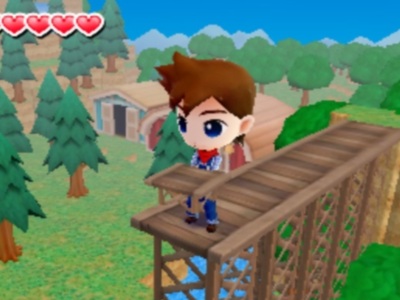Without delving too deeply into legal shenanigans, the aforementioned creative minds behind the bulk of the series will be self-publishing its own games games for the foreseeable future so publisher Natsume is leaping at the opportunity with its own in-house title. So while Natsume influenced the franchise in its early days, The Lost Valley represents the future with the company wielding complete creative control.
The first of The Lost Valley’s two elements is the farming, which is a familiar one that has undergone several tweaks. There’s a concerted effort to streamline the daily grind of watering plants and pouring seeds through simple button shortcuts and context-sensitive action triggers. When scaling a franchise back to its roots, however, the central mechanics must be appealing or the entire experience is compromised. Natsume averted total disaster with this new system that facilitates speediness, but the length of the animations means the player’s actions take several seconds longer than necessary. It sounds minute, but because you’re working to an in-game clock that’s constantly ticking over, the end result is that you’re going to feel pressed for time on a daily basis. It’s more stressful than a Harvest Moon game should be, and the cause is something as simple as those animations.
While an array of land tweaks can be performed from the outset, you’ll have to devote your playtime to what little narrative exists if you wish to develop structures and churn out a profit. Unlike previous Harvest Moon games, winter weather is the default for every season and the appropriate foliage must be unlocked by completing a series of task-intensive missions. It’s an odd direction considering the story’s relatively light-hearted nature and the typically homey feel of the series. This certainly isn’t aided by the repetitive nature of the missions, which ultimately has players more caught up in the least immediately rewarding portion of the series.
Anime Editor
Email me at: clarka@digitallydownloaded.net











